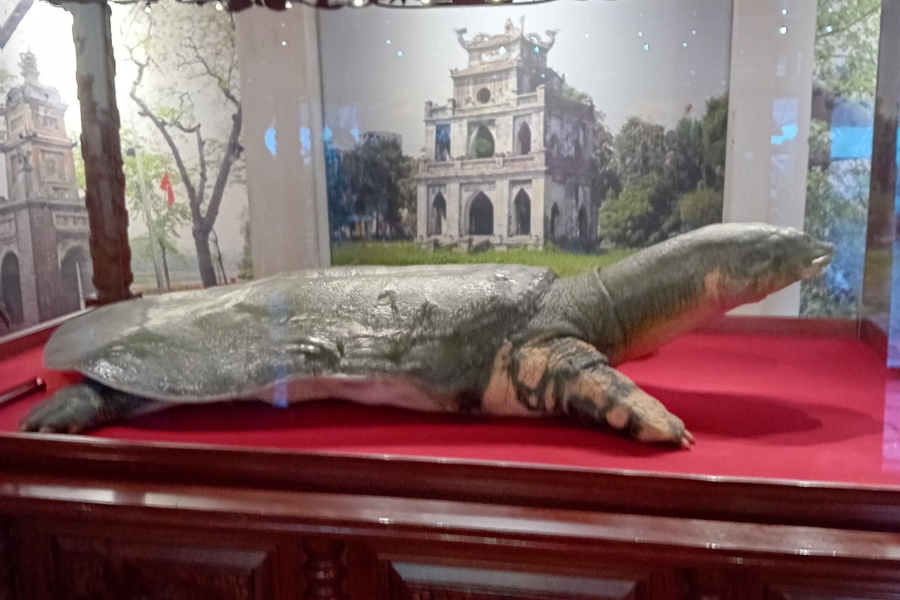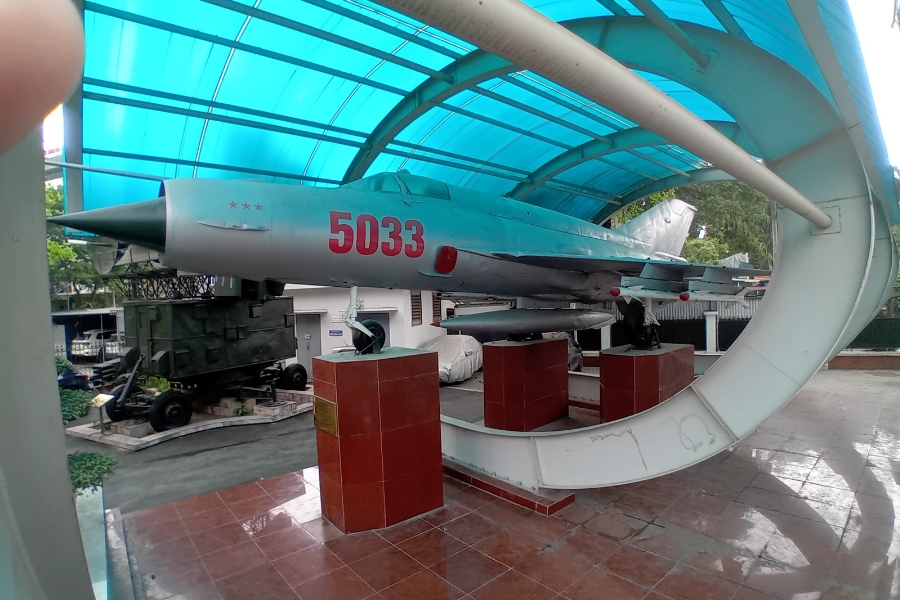Exploring Hanoi is like walking around a giant nest of scooters. There are swarms of them everywhere you turn, but by some miracle you cross the roads and they swerve around you with inches to spare.

Scooters in Hanoi
Things to do in Hanoi.
We met our guide Minh at our city centre hotel, Rising Dragon Legend, and headed into the 29c heat for a look around.
Hoan Kiem Lake
Uneven pavements led us by bustling cafes and shops selling every conceivable commodity to Hoan Kiem Lake.

The story goes that in the mid-15th century Heaven sent Emperor Ly Thai To a magic sword which he used to drive the Chinese from Vietnam.
After the war a giant golden turtle grabbed the sword and disappeared into the depths of this lake to restore the sword to its divine owners, inspiring the name Ho Hoan Kiem (Lake of the Restored Sword).
There is a small entrance fee for tourists of 50,000vnd per person.
We crossed a red bridge to a temple, turtle models in display cabinets, banana trees and koi carp in a wishing well.


Old Quarter
Having navigated a Picadilly Circus-style intersection, we strolled by a multi-tiered bank of coffee shops that looked like the stern of an ocean liner before our guide led us through a mysterious door that led to a cafe. The Old Quarter is full of them, hidden around corners and down alleyways.

History of egg coffee.
We ordered our first egg coffee and climbed several storeys to sample it on the rooftop, with views over the lake we had just visited.
Apparently egg was first whisked into coffee in 1946 by bartender Nguyen Van Giang as a much-needed milk substitute and it works quite well.
It should be noted that egg is not a dominate taste in the coffee, and surprisingly, its quite tasty, although sweet and dense for the traditionalist. The cold coffee comes in a cup loaded with ice and tastes more like a dessert. Think coffee ice cream.
The hot version of Vietnamese egg coffee has a thick, foamy egg-based head. This yellowish creamy goodness is perfect for coffee lovers.

Egg coffee
St Joseph’s Cathedral
Imposing St. Joseph Cathedral was our next port of call, one of the earliest in the history of the Catholic Church in Vietnam.

Biblical scenes surround the cathedral, including an ornate mural of the story of Christ from birth to crucifixion.


From there it was onward through the hustle and bustle and shops selling everything from pots and pans to padlocks, herbal medicine, paper lamps and piggy banks.


Passing the city’s Al-Noor mosque, we next discovered a street of brilliantly painted murals which included a gold painted Honda motorcycle which marks the site of the city’s first ‘motorcycle market’.


Our guide led us on to what she described as ‘Hanoi’s most beautiful street’, where leaves cover the pavement during autumn and photographers capture artistic shots of beautiful brides.


We dipped into the white, cavernous interior of Cua Bac Roman Catholic church, built in 1932 by the French administration of Indochina complete with a blue and white circular stained glass window.
The American War
From there we hopped into a cab to see a morbid relic of the country’s darker times, described by me as the ‘Vietnam War’ but by our guide as the ‘American War’.
Slumped in Huu Tiep lake is a chunk of the mangled remains of a B52 bomber shot out of the sky during the conflict in December, 1972.

Close by the authorities have used more B52 bits to assemble a whole one, complete with engines, undercarriage and bomb cases.
It makes you think about both the boys shot down and the people who perished in the bombing.
And alongside the wreckage is a pair of surface-to-air missiles (SAM) raised to the sky as if poised to defend their beloved, resilient country again, as well as a MIG-21 jet fighter with a similar air of defiance.
With that thought we grabbed another coffee at a hideaway cafe, called a taxi and headed back to our base.



And we changed 100 pounds sterling and became the proud owners of three million Dong ready for our next venture out in the seething metropolis, where the fun goes on till late into the night.




Read our other posts
- 5 Days in Southern Spain: Malaga, Setenil, Ronda & Gibraltar (With Tapas, Views & a Few Wrong Turns)
- Visiting Guernsey, Herm & Sark: A No-Car, No-Stress Island-Hopping Trip
- From Langkawi to Railay: Island-Hopping Bliss
- Malaysia, 2 weeks, 3 locations – KL, Penang & Langkawi
- Venice, vaporettos and views